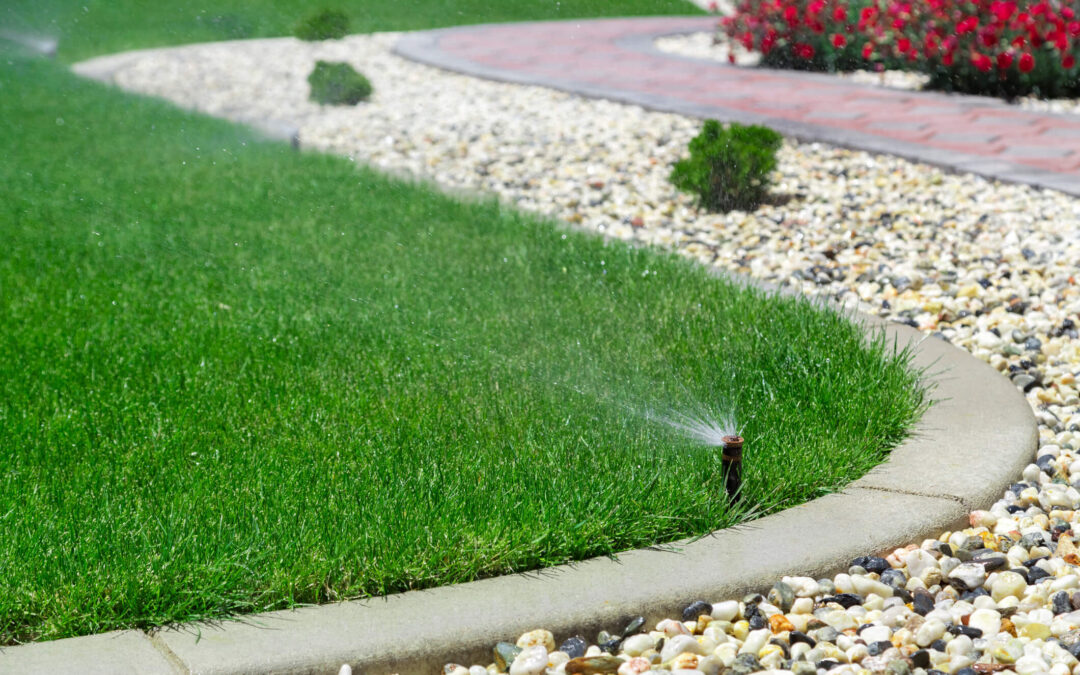Living in Florida, it’s natural to be surrounded by greenery year-round, but healthy flora shouldn’t be taken for granted. Homeowners in Central Florida are presented with unique challenges when it comes to keeping their lawn green during the steamy summer months.
We all love the pride we feel when our grass is thick and lush. When your turf is this healthy, not only does it turn heads and feel terrific under bare feet, but it also cools the air, reduces soil erosion, filters and traps pollutants that contaminate ground water, and increases our property value.
If you want your home surrounded by an emerald green carpet that resists pests and disease, stay on top of lawn maintenance throughout the summer.
A green lawn is a healthy lawn!
Follow these eco-friendly tips to keep your lawn green all summer long.
Feed Famished Grass
Springtime lawns are hungry!
Your first fertilizer treatment of the year can be applied in March or April because it’s the beginning of the growing season and all threats of frost have passed. You should fertilize again during the summer, but the timing of this depends on whether you’re following a higher lawn maintenance schedule or a basic plan. Your last fertilizer treatment should be applied in mid-October before your lawn goes dormant.
Different grasses have unique fertilizer needs, but in general, you want to choose a fertilizer that contains slow-release nitrogen because this is best for the environment and won’t burn your lawn. Nitrogen is what gives grass a brilliant green color. However, you should only add it during springtime because fertilizing with nitrogen in the summer often leads to insect and disease problems.
Your summer fertilizer treatment needs to contain either iron sulfate or chelated iron. This will give your lawn a dark green color without stimulating growth. However, the effects of the iron will wear off, so you’ll need to treat your grass again two to four weeks later to make sure it retains a gorgeous shade of green.
Whatever fertilizer you decide to use throughout the growing season, it must have 2% or less of phosphorus in accordance with Florida State Law. Many Florida lawns are already rich in phosphorus, so you might not need to add more to yours. The best thing to do is consult your county’s extension service to learn about having your soil tested. If you have questions about the kind of fertilizer that’s best for your turf and unsure about calculating the correct amount of fertilizer to use, your local extension office can help you figure this out, too.
It’s important to use a fertilizer spreader that has a deflector shield to keep the granules from landing on sidewalks and driveways. When fertilizer sits on paved surfaces, it gets washed into storm drains and pollutes bodies of water. Speaking of water, if your property is connected to a lake, stream, or swampland, be sure to leave a ten-foot buffer zone as you’re fertilizing.
Ease Up on Irrigating
Thanks to Central Florida’s tropical climate, there’s no shortage of rain during the summer months. This means you can relax your irrigation schedule and let Mother Nature quench your lawn’s thirst.
If you don’t adjust your irrigation schedule, your lawn will become waterlogged. When this happens, your grass is susceptible to root rot and other diseases while weeds thrive.
To keep your grass healthy and green in the summer, irrigate only when you notice that the blades are folding or turning a blue-gray color. If your lawn fails to spring back after being walked on, this is another indication that it’s suffering from dehydration.
When giving your grass a drink in the summer, set your irrigation system to run at sunrise, but do this only once or twice a week. This way, your lawn has a chance to soak up the moisture it needs before the daytime heat kicks in.
Be sure to check your irrigation system periodically to make sure it’s working properly. If you’re not sure your system is running like it should, call us or complete our request service form and we’ll be happy to take a look.
Proper Mowing Makes an Impact
The regular afternoon showers that Central Florida experiences in the summer keeps lawn mowers cranking. However, it’s important to follow proper mowing protocols to keep your grass healthy and green.
First, always keep your mower blades sharp. Next, you need to know the type of grass you have to determine the ideal height of the mower blades. If you mow your lawn too short, you’ll scalp the grass, which will stress your turf and leave it vulnerable to disease, insects, drought, and weeds. You’ll know when this happens because your grass will turn yellow and brown.
When you’re done mowing, give your lawn a treat by leaving the grass clippings on the ground, so valuable nutrients can be returned to the soil and help your turf stay healthy and green.
If you go on vacation and miss a mowing, cut your grass a tad higher than you usually do to avoid stressing your lawn. For your next mowing, you can cut the grass to its ideal height.
Proper Lawn care Leads to Emerald Green Grass
Central Floridians that practice proper lawn care enjoy the greenest summer grass because their lawn has strength and vigor.
When you’re careful about fertilizing, mowing, and irrigating your grass the right way, you are abiding by Florida’s Best Management Practices, or BMPs. Following these techniques will not only earn you the glory of having the most beautiful lawn in the neighborhood, but you can enjoy the time and money you’re saving because you aren’t battling diseases and pests or replacing large patches of turf. You’re also helping the environment by reducing nonpoint source pollution.
Remember, if you ever need assistance with sprinkler repair or irrigation in the Orlando area, we’re here to help!

